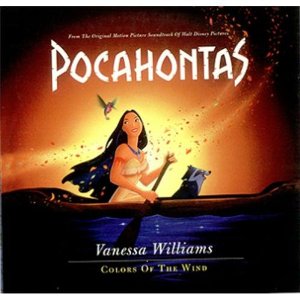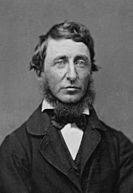Colors of the Wind facts for kids
Quick facts for kids "Colors of the Wind" |
|
|---|---|
| Song by Judy Kuhn | |
| from the album Pocahontas: An Original Walt Disney Records Soundtrack | |
| Released | May 30, 1995 |
| Genre | Pop |
| Length | 3:34 |
| Label | Walt Disney |
| Songwriter(s) | Alan Menken Stephen Schwartz |
| Producer(s) | Alan Menken |
"Colors of the Wind" is a famous song from Walt Disney Pictures' animated movie Pocahontas (1995). Alan Menken wrote the music and Stephen Schwartz wrote the words.
The song is all about respecting nature and understanding that everything in the world is connected. It also talks about seeing the world from different points of view. Judy Kuhn, who was the singing voice of Pocahontas in the movie, sang the original version.
"Colors of the Wind" was loved by many people and won several big awards. It won an Academy Award for Best Original Song, a Grammy Award, and a Golden Globe Award for Best Original Song. American singer Vanessa Williams also released a very popular version of the song, which became a top hit on the Billboard charts. Many other artists have covered the song too.
Contents
How the Song Was Made

After another Disney composer, Howard Ashman, passed away, Disney looked for someone new to work with Alan Menken. They called Stephen Schwartz, who had written music for popular Broadway shows like Godspell and Pippin. Even though Schwartz had never worked on movies before, he agreed to join Menken.
Schwartz wanted to write a song where Pocahontas would teach John Smith about her culture and how to respect nature. "Colors of the Wind" was the very first song written for the Pocahontas movie. Schwartz said that this song helped shape the rest of the film's story.
The ideas for the song came from Native American poems, music, and old stories. It was also inspired by a famous letter from Chief Seattle to the United States Congress. In his letter, Chief Seattle talked about how humans are connected to nature. He wrote about the wind giving life and taking the last breath. This part of the letter gave Stephen Schwartz the idea for the song's title, "Colors of the Wind." He liked the title because it made people think.
Menken and Schwartz also wanted the song to deal with ideas of prejudice. Menken said the song started with a Native American feel but then became its own unique style. At first, the song had different ending words. Menken didn't like them, so Schwartz rewrote them to be more powerful. Schwartz learned an important lesson that day: if your partner isn't happy, it means the song can be even better! He believes changing those words helped him win an Academy Award.
What the Song Means
"Colors of the Wind" is a pop song sung by Judy Kuhn. It lasts for three minutes and thirty-four seconds. The song is about animism, which is the idea that spirits live in nature, and about having deep respect for the environment. The lyrics talk about "painting with all the colors of the wind" and hearing "the voices of the mountains sing."
Many people have said the song's words about nature's connection are similar to the ideas of transcendentalism. This was a way of thinking from the 1800s by writers like Henry David Thoreau and Ralph Waldo Emerson. They believed in the goodness of people and nature. The song's lyrics have also been compared to New Age spirituality, which focuses on personal growth and a connection to the universe. Some critics also felt the song's message was like a public service announcement about accepting diversity.
One interesting line in the song mentions a "blue corn moon." Stephen Schwartz made up this phrase. He read a Native American poem that talked about a "green corn moon," which meant a certain time of year. Schwartz changed it to "blue corn moon" because he liked the sound better. He thought it sounded like a blue moon or reminded him of blue corn tortillas.
International Versions
The movie's 10th anniversary DVD shows a special clip reel. It features "Colors of the Wind" sung in 11 different languages. This shows how popular the song was all around the world.
Other Versions and Uses
Vanessa Williams' Version
| "Colors of the Wind" | ||||
|---|---|---|---|---|
 |
||||
| Single by Vanessa Williams | ||||
| from the album Pocahontas: An Original Walt Disney Records Soundtrack | ||||
| Released | May 23, 1995 | |||
| Recorded | 1995 | |||
| Genre | ||||
| Length | 4:17 | |||
| Label | Walt Disney, Mercury | |||
| Songwriter(s) | Alan Menken, Stephen Schwartz | |||
| Producer(s) | Keith Thomas, Robbie Buchanan | |||
| Vanessa Williams singles chronology | ||||
|
||||
Vanessa Williams was chosen to sing "Colors of the Wind" because her song "Save the Best for Last" was very successful. Her version is a pop song that sounds a bit different from the movie's original. It even features Bill Miller playing a Native American flute.
It was common for Disney movies to have a pop version of a main song for the radio. This happened with songs like "Beauty and the Beast" and "Let It Go." Vanessa Williams' version of "Colors of the Wind" continued this tradition.
People Who Worked on Vanessa Williams' Version
- Vanessa Williams: Main singer
- Alan Menken: Wrote the music
- Stephen Schwartz: Wrote the lyrics
- Robbie Buchanan: Arranged the music, played keyboards
- Keith Thomas: Produced the song, arranged, played keyboards and drums
- Mark Hammond: Programmed drums
- Dann Huff: Played guitars
- Bill Miller: Played flute
- Ronn Huff: Arranged for the orchestra
- The Nashville String Machine: Played the orchestra parts
Other Artists Who Covered the Song
Many other artists have sung "Colors of the Wind."
- Ashanti covered it for the album Disneymania (2002).
- Actress Christy Carlson Romano sang it for her first EP (2004).
- Actress and singer Vanessa Hudgens covered it for Disneymania 5 (2007).
- Brian Wilson released a version with a funk style on his album In the Key of Disney (2011).
- American singer Tori Kelly included her version on the album We Love Disney (2015). She loved Pocahontas as a child.
- The Chipettes covered the song for their 1995 album.
- Australian singer Mirusia Louwerse covered it for her album This Time Tomorrow (2016).
- Postmodern Jukebox, a group known for vintage-style covers, made a version in the style of 1970s soul music.
Where Else the Song Has Been Used
Actress Melissa McCarthy famously lip-synced "Colors of the Wind" on the show Lip Sync Battle. During her performance, she wore goggles and a strong wind machine blew water, stuffed animals, confetti, and fake leaves at her. The audience loved it, and she won the battle!
Song Charts and Awards
Vanessa Williams' VersionWeekly Charts
Year-End Charts
Certifications
|
Judy Kuhn's Version
Certifications
| Region | Certification | Sales |
|---|---|---|
| United Kingdom (BPI) | Silver | 200,000^ |
|
xunspecified figures based on certification alone |
||
See also
 In Spanish: Colors of the Wind para niños
In Spanish: Colors of the Wind para niños



